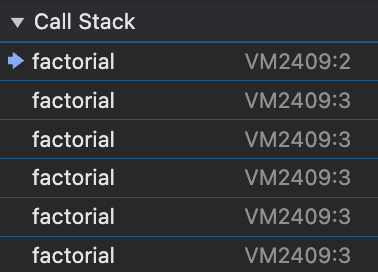Recursion
 Luiz Celso Pergentino
Luiz Celso PergentinoRecursion is basically a process that calls itself until it reaches the finish condition.
Here's a factorial algorithm as an example:
function factorial(num) {
// End of the recursion
if (num === 1) return num;
// Calls itself decreasing the input by 1
return num * factorial(num - 1);
}
\You can generate a stack overflow here by just using any number smaller than 1*
The processes are stored in a structure called a call stack, which pushes the processes—calls—into the stack and pops them when they are finished.

All recursion algorithms should have the following:
Return something to get out of the stack
A condition that ends the recursion (base case)
A code that changes the input (e.g., incrementing the input)
Benefits:
Readability of the code
Elegant solution
Breakdown the problem into smaller pieces (divide-and-conquer problem approach)
Drawbacks:
Performance problems with deeply nested calls
Stack overflow (no base case, no return or returning wrong thing)
In some cases, more inefficient than iterate solutions (loops)
Where we find recursion in JS:
JSON.parse() / JSON.stringfy()
DOM traversal algorithms
Object traversal algorithms
More deeply into call stack:
The maximum size depends on the system and browsers (Chrome around 10-20k calls, Node.js around 100k calls)
In node, you can set the maximum call stack size by calling
node --stack-size=XmbTo calculate the approximate space consumed by a function call:
stack_size = sizeof(arguments) + sizeof(local_variables) + sizeof(return_value) + sizeof(context)
Subscribe to my newsletter
Read articles from Luiz Celso Pergentino directly inside your inbox. Subscribe to the newsletter, and don't miss out.
Written by
